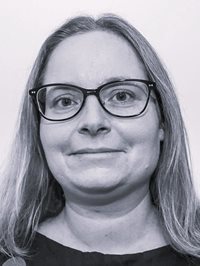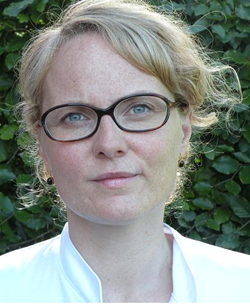ESTRO 2024 Congress report
Immunotherapy has profoundly changed the treatment of stage III non-small-cell lung cancer (NSCLC) and necessitates a renewed discussion of optimal radiation dose and volume and the immune system as an organ at risk. This was the focus of the joint symposium by ESTRO and the International Association for the Study of Lung Cancer (IASLC), in which four brilliant speakers presented new data and discussed different perspectives.
Tine Schytte from Denmark showed positive results of the phase III heterogeneous fludeoxyglucose (FDG)-guided dose escalation for locally advanced NSCLC (NARLAL2) trial, in which 350 patients were randomised to either standard doses of 66Gy in 33 fractions to the whole planning target volume (PTV), or to a heterogeneous FDG-positron emission tomography (PET)-guided dose escalation up to mean doses of 95Gy in 33 fractions to the primary tumour while coverage of the PTV was kept as in the standard arm. The results showed significantly improved loco-regional control without increased toxicity. While other dose-escalation trials for this patient group have shown unfavourable results with either lower survival or high toxicity rates, the combination of dose escalation and smaller volumes that were restricted by strict normal tissue constraints looks promising.
Corinne Faivre-Finn from the UK gave a comprehensive overview of NSCLC dose-escalation trials, from the early promising phase I/II studies to the discouraging survival results of the phase III Radiation Therapy Oncology Group (RTOG) 0617 trial and the high toxicity rates in the PET-Boost trial. Dr Faivre-Finn highlighted that secondary analyses from the RTOG 0617 trial and large data mining studies indicated that doses to immune cells and the base of the heart negatively impacted survival. The failure of dose-escalation trials and the success of the PACIFIC trial with the addition of immunotherapy points towards research on de-escalating radiation dose and volume. Dr Faivre-Finn questioned the need for large clinical target volume margins in modern radiotherapy given that 4D-CT, image guidance, and adaption are available. She concluded by encouraging everyone to enrol patients on to clinical trials.
Nitin Ohri from the US questioned why all patients with NSCLC were treated alike despite large heterogeneities in terms of histology, tumour burden and fragility. Dr Ohri presented the results of the rePAINT study, in which the experimental arm delivered decreased radiotherapy doses to small lesions, while larger lesions received higher doses. The study showed no difference in overall survival or progression-free survival rates, but indicated reduced incidence of grade 3 or higher lymphopenia. Dr Ohri recommended more trials in which individualised dose prescription was tested with reduced radiotherapy doses to small lesions to reduce toxicity and attenuate immunosuppression.
The session was concluded by Andrea Filippi from Italy who supported the ideas of the previous speakers and highlighted heterogeneity as an opportunity to individualise treatment. Dr Filippi suggested an increased use of biomarkers to guide the treatment choice. In the PACIFIC trial, durvalumab had no effect only on patients with PD-L1 of <1%, and the treatment approach for this patient group should be different. The results regarding circulating tumour DNA are promising in the identification of patients with a high risk of recurrence after chemo-radiotherapy and this method should be used to guide treatment in the maintenance phase.
The ESTRO-IASLC joint symposium gave a good overview of different approaches to improve outcomes for stage III NSCLC and pointed toward a future in which the optimal combination of radiotherapy and systemic treatment would be tailored to the requirements of each patient.
Ditte Sloth Møller PhD

Medical Physicist, Associate Professor
Aarhus University Hospital and Aarhus University, Denmark
Gitte Fredberg Persson MD PhD

Associate professorClinical oncology consultant
Copenhagen University Hospital Herlev & Gentofte , Denmark